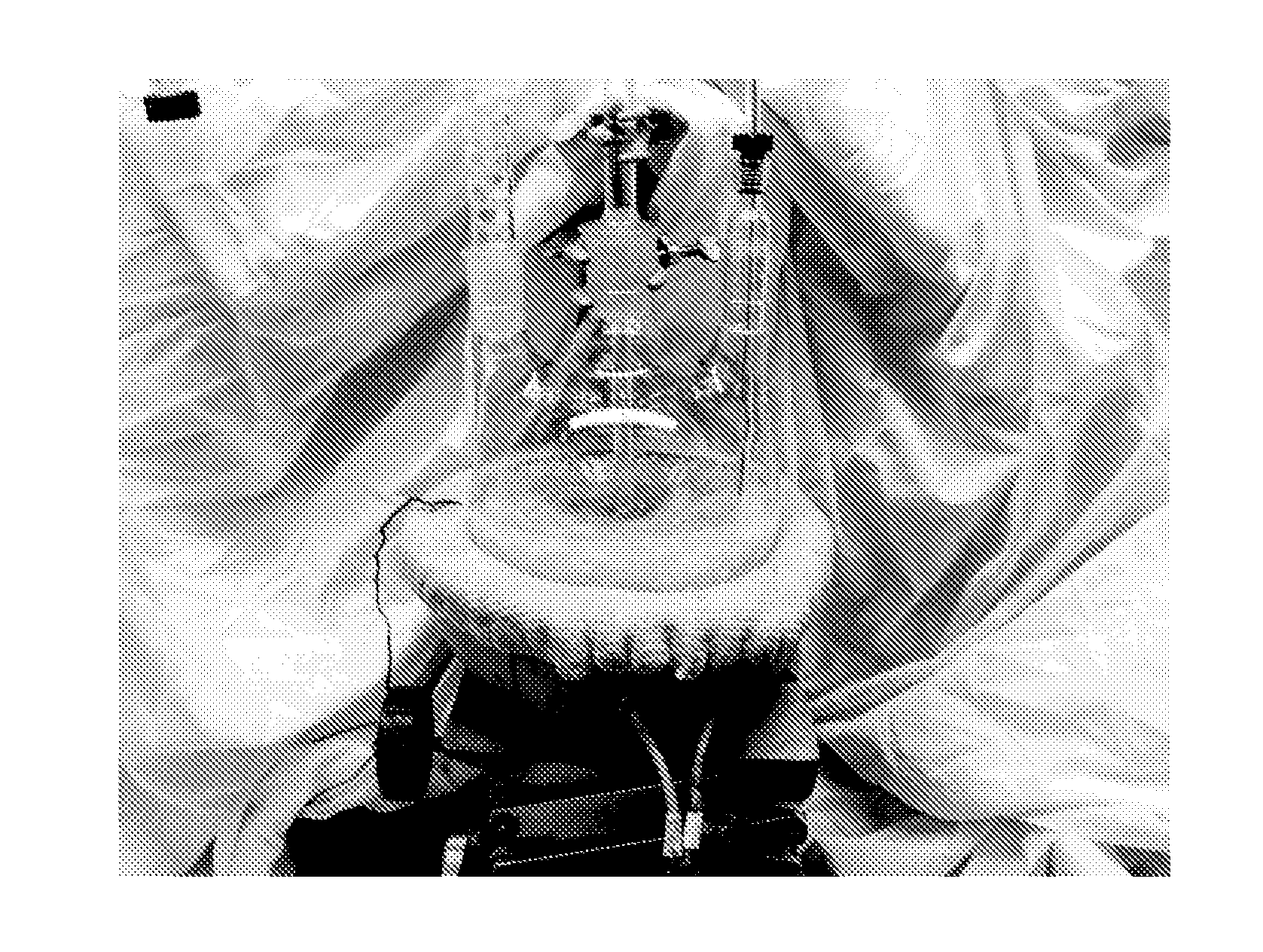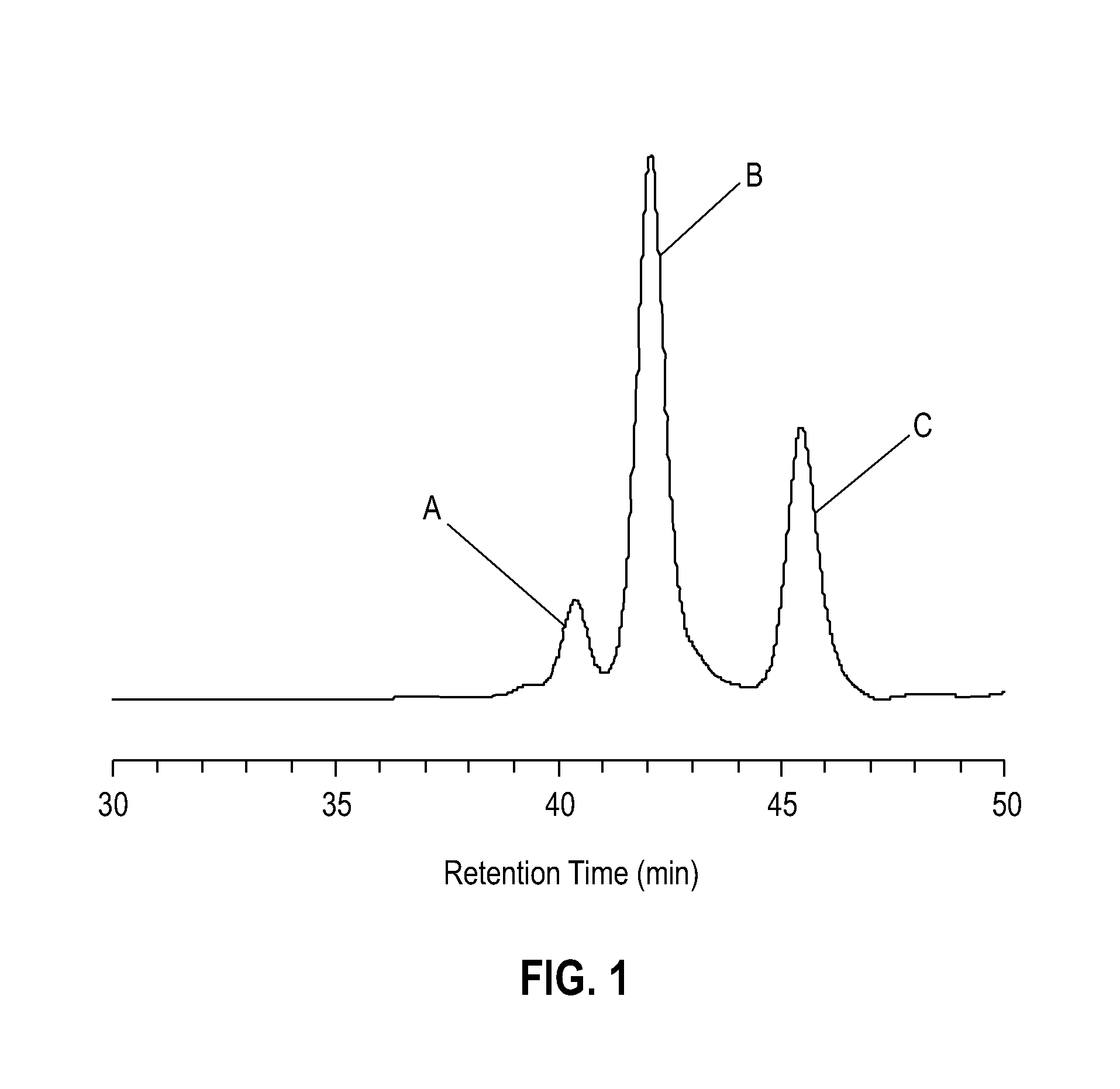Methods of depolymerizing terephthalate polyesters
a technology of terephthalate polyester and polyethylene, which is applied in the direction of physical/chemical process catalysts, organic compound/hydride/coordination complex catalysts, other chemical processes, etc., can solve the problems of environmental pollution, high energy consumption, and overall higher processing costs compared to mechanical recycling,
- Summary
- Abstract
- Description
- Claims
- Application Information
AI Technical Summary
Benefits of technology
Problems solved by technology
Method used
Image
Examples
example 1
[0085]Use of 10 mol % DBU. To a 25 ml Schlenk tube containing post-consumer PET flakes (0.96 g, 5.0 mmol) was charged a mixture of ethylene glycol (EG) (4.96 g, 80 mmol) and 1,8-diazabicycloundec-7-ene (DBU) (76 mg, 0.50 mmol). The tube was immersed in an oil bath and heated with stirring at 190° C. The slurry turned into a clear and homogeneous liquid in 6.5 minutes. Aliquots of the crude product were taken for 1H NMR and GPC analysis in order to evaluate the contents. The crude depolymerization products obtained in the above reaction consist of bis(2-hydroxyethyl)terephthalate (BHET), PET oligomers comprising mainly dimer and trimer, and excess EG. FIG. 1 is a typical gel permeation chromatogram (GPC) of the crude glycolysis products formed by the depolymerization reaction. Peak A corresponds to PET oligomers, peak B corresponds to BHET, and peak C corresponds to EG. GPC peak A corresponds to PET oligomers, GPC peak B corresponds to BHET, and peak GBC peak C is EG. Based on a rati...
example 2
[0086]Use of 5 mol % DBU. To a 25 ml Schlenk tube containing PET flakes (0.48 g, 2.5 mmol) was charged a mixture of EG (2.48 g, 40 mmol) and DBU (38 mg, 0.25 mmol). The tube was immersed in an oil bath and heated with stirring at 190° C. The slurry turned into a clear and homogeneous liquid in 5 minutes. Aliquots of the crude product were taken for 1H NMR and GPC analysis in order to evaluate the content. BHET:PET oligomer=98.8:1.2 w / w.
[0087]The crude BHET product was purified in several ways, as follows:
[0088]a) Recrystallization. The crude product was poured in deionized water (100 ml) while being warm. The insoluble fraction was isolated by filtration and the filtrate was then left in a refrigerator (4° C.) for 24 hours. The crystals formed were filtered and dried in vacuum to yield the product (0.52 g, 81%).
[0089]b) Extraction. The crude product was cooled down to ambient temperature and dissolved in methylene chloride (100 ml) and washed with 0.5 N HCl aqueous solution (100 ml)...
example 3
[0091]Use of 10 mol % DBN. To a 25 ml Schlenk tube containing PET flakes (0.96 g, 5.0 mmol) was charged a mixture of EG (4.96 g, 80 mmol) and DBN (65 mg, 0.5 mmol). The tube was immersed in an oil bath and heated with stirring at 190° C. The slurry turned into a clear and homogeneous liquid in 7 minutes. Aliquots of the crude product were taken for 1H NMR and GPC analysis in order to evaluate the content. BHET:PET oligomer=98.5:1.5 w / w.
PUM
| Property | Measurement | Unit |
|---|---|---|
| Temperature | aaaaa | aaaaa |
| Temperature | aaaaa | aaaaa |
| Temperature | aaaaa | aaaaa |
Abstract
Description
Claims
Application Information
 Login to View More
Login to View More - R&D
- Intellectual Property
- Life Sciences
- Materials
- Tech Scout
- Unparalleled Data Quality
- Higher Quality Content
- 60% Fewer Hallucinations
Browse by: Latest US Patents, China's latest patents, Technical Efficacy Thesaurus, Application Domain, Technology Topic, Popular Technical Reports.
© 2025 PatSnap. All rights reserved.Legal|Privacy policy|Modern Slavery Act Transparency Statement|Sitemap|About US| Contact US: help@patsnap.com



